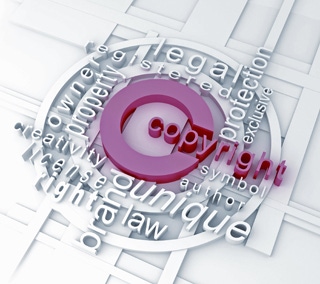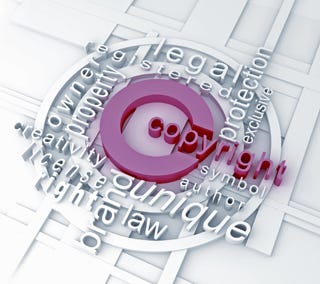

Intellectual
For many consumers, product packaging is what sets a particular product apart from the competition on a supermarket shelf or in an electronics store. Companies invest heavily in creating distinctive product packaging designs and spend years encouraging consumers to associate their brand with its packaging. To protect this investment of time and money from competitors seeking to reap from your investment, look to trade dress, design patent and/or copyright for protection.
Protecting shape and design
"Trade dress" is the total image of a product and may include features such as size, shape, color or color combinations, texture and graphics. Trade dress is comprised of the aspects of overall appearance that distinguish a product and identify its source, without serving any other significant function.
Trade dress may be registered with the U.S. Patent and Trademark Office (PTO) if it is non-functional, distinctive and serves to identify and distinguish the products of a particular source from those of others. Registration is for an initial term of 10 years and can be extended indefinitely so long as the required maintenance fees are paid and the trade dress continues to serve as an identifier of the source. In determining whether trade dress may be registered, the first requirement is to determine whether the trade dress is a "product configuration" or "product packaging." This distinction determines how the trade dress is examined by the PTO. Product configuration trade dress encompasses the design or features of the product and is inseparable from the product itself. Product packaging trade dress includes the total image created by the packaging in which a product is marketed and is conceptually separable from the product itself.
Registration of a "product configuration" trade dress with the PTO requires showing "acquired distinctiveness." Trade dress has acquired distinctiveness when consumers can identify the source of the product based on its design. Volkswagen's Beetle automobile is a classic example of a product configuration trade dress. Typically, acquired distinctiveness is evidenced by consumer surveys, affidavits from industry insiders, sales figures, advertising focused on the trade dress elements and the like. Acquired distinctiveness may also be established by substantially exclusive use of the trade dress in commerce for a period of five years. Absent acquired distinctiveness, product configuration trade dress may be registered on the PTO's Supplemental Register.
However, applicants seeking to register a "product packaging" trade dress need not show acquired distinctiveness, but may obtain registration upon a showing that the packaging is "inherently distinctive." Packaging is inherently distinctive when, by its intrinsic nature, it identifies a particular source. An example of inherently distinctive product packaging trade dress is the iconic Coke bottle. If the PTO cannot determine whether the claimed trade dress is product configuration or product packaging, the PTO will generally classify the trade dress as product configuration and thus require evidence of acquired distinctiveness as a prerequisite to permitting registration.
Trade dress recommendations
1. Tout the uniqueness of the non-functional features of your packaging by using verbal descriptions and promotional materials (such as labels and web pages) that emphasize the "uniqueness," "originality" and "exclusivity" of the packaging design. Tell the trade and consumers to look for certain specific distinguishing, ornamental characteristics of your packaging.
2. Put competitors on notice of your trade dress claims. Include a legend on your packages such as: "The shape and appearance of this [packaging] is a trademark and trade dress of [company name]." Also, product configuration not registered may be depicted in tandem with the TM symbol while a registered product can be designated with the ® symbol.
3. For any trade dress that includes a product design that can be graphically depicted, reproduce the design on the product label, hang tags and/or on promotional items.
4. Do not tout utilitarian features of your trade dress. Doing so may allow a competitor to challenge your trade dress as being "functional," and therefore unprotectable.
5. Protect your trade dress with the PTO. When applicable, present evidence to support a claim for "acquired distinctiveness."
Protecting ornamental features
Design patent protection may also be available for your packaging. A design patent provides the owner with the right to prevent others from making, using, selling, importing or offering for sale a product that so resembles the patented product that an ordinary observer might purchase the infringing article, thinking it was the patented design.
The design to be patented must be new and "ornamental." Additionally, the design must be "non-obvious" when viewed by a hypothetical designer skilled in the relevant art and in the context of any previously existing design or combination of designs.
Design patents are issued for ornamental configuration, surface decoration or both. A design patent protects products only to the extent that the ornamental features predominate over the functional features.
Design patents can be powerful weapons to combat knockoffs or copies because, in contrast to trade dress, design patents do not require the owner to establish acquired distinctiveness. Thus, affidavits and marketing surveys (which can be time consuming and expensive to obtain) to establish trade dress are not needed with design patents.
Design patent recommendations
A design patent is obtained by filing an application with the PTO with drawings that depict the design to be protected. A design patent has a single, non-renewable term of 14 years from its issue date.
1. Pursue design patents promptly. You cannot obtain a design patent if you do not file an application within one year of first publicizing, selling or offering for sale the design you seek to patent.
2. Consider including a "patent pending" notice on designs for which a design patent is pending. Although such a notice is not required, the marketplace becomes aware that you have applied for patent protection, and competitors are deterred from knocking off your designs.
3. Once the design patent issues, the product embodying the patented design should be marked with the word "Patent" or "Pat." and the patent number.
Protecting aesthetic features
Copyright protection is provided to authors of original works of authorship, and at its essence, protects against the copying of the subject work. The protection exists automatically for works upon their creation in a tangible form. Registration is not a condition for protection, but copyright law provides motivation for copyright owners to register their works.
Copyright registration lasts for the life of the "author" plus 70 years. For works where the author is the employer (because the work was prepared in the context of employment), the copyright protection is 95 years from publication or 120 years from creation, whichever is shorter.
Designs that are separately identifiable from "useful articles" (such as products) may be registered with the Copyright Office. Copyright does not protect the utilitarian aspects of works, and a product may have both copyrightable and uncopyrightable features. On this basis, a floral relief design embodied in a bottle could be protected by copyright, even if the bottle is not.
Copyright recommendations
1. Stamp a copyright notice into the base of products and/or apply it to product labels or packaging.
2. Where packaging includes aesthetic non-functional features viewed separably from the product itself, seek registration for those elements.
Trade dress, patent and copyright protection are legal tools you can use to protect the investment and goodwill in your packaging. One or more of these forms of protection may be available with respect to a particular packaging design.
Consider these forms of protection early in your product's lifecycle to provide you the most protection and best position your company to challenge those seeking to copy or knock-off your work.
Jeffrey Brown and Adnan Bohri are attorneys specializing in intellectual property practice with Michael Best & Friedrich LLP. For more information, call 312-222-0800 or visit www.michaelbest.com.
About the Author(s)
You May Also Like


